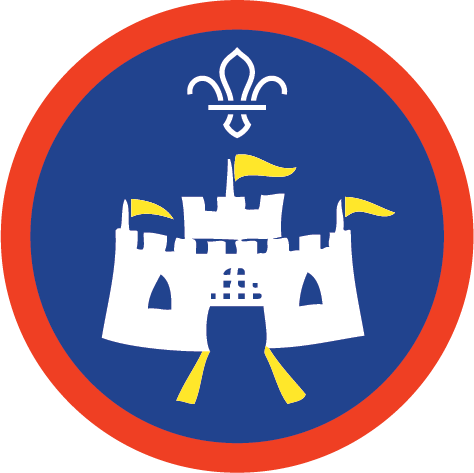The electric stroll
You’ll need
- Pens or pencils
- A4 paper
- Weather appropriate clothing
- Hi vis clothing
- Map of local area
Before you begin
- Clipboards would also be useful for this activity, but you can improvise if you don’t have them. You may also need torches, depending on the time or day or year you’re doing this activity.
- Make sure everyone knows they’ll need to have suitable clothes and shoes for walking. Flip flops aren’t the best choice for this activity!
- Plan a route for the group to walk around the local area, starting and ending at your usual meeting place. The route should last about an hour, or however long works best for your group.
- People will be looking for places that use lots of electricity and places that use less electricity, so it’s a good idea to try to walk past bigger buildings like schools or doctors’ surgeries as well as public residential areas.
- Make sure the routes are as safe as possible (especially if you live near busy roads or crowded areas).
Think local
- Everyone should split into groups of about three or four people.
- Each team should write down three important things in their local area that need electricity (for example, a doctors’ surgery, a school, and a library). They should also write down three important things that don’t need much electricity (for example, parks, bus stops, and recycling banks).
- After a few minutes, the teams should take it in turns to read out their ideas.
- The person leading the activity should show everyone the map of the local area. Can anyone spot anything that uses a lot of electricity that no one thought of?
- The person leading the activity should explain that electricity comes from central power stations connected by the national power grid. It can travel a long way to reach the place it’s needed.
- Everyone should think about what might happen if there’s a problem at the power grid, or somewhere along the journey between the grid and the community.
- Each group should think about which places should get electricity first if there’s not enough to go around, then write them down.
Look for lights
- Each group should get a pen or pencil, a new piece of paper, or a clipboard (if they have them).
- Each group should split their piece of paper into three vertical columns. They should label the first ‘Street’, the second ‘Building’, and the third ‘Power used’.
- Everyone should set out on the route around their community.
- Every time they turn onto a new street, each team should write its name in the ‘Street’ column. If it doesn’t have a name, they should briefly describe it instead.
- On each street, everyone should look at a mixture of buildings. They should write the name of the buildings in the ‘Buildings’ column. Each team should chat about why each of the buildings might be important to the community. They might want to jot down a few words to remind them what they talked about.
- Everyone should see roughly how many lights are switched on in each building. They should make a note of the number for each building in the third column. Some places will have their lights on all night, for example, hospitals.
- Once everyone’s back at the meeting place, they should share their findings. Which streets and buildings had the most lights on? Which had the least? Were any using too much electricity, or were the lights too important to be switched off?
Reflection
This activity was all about being a citizen and helping your community. Was anyone surprised by anything they found on their walk – were there any places that used a lot of electricity unexpectedly? What about places that didn’t use much at all? Why is it useful to know about the services that exist in a local area?
Knowing how electricity is used is important, because it helps people prepare in case there are issues with the supply. If there was an issue (for example, a shortage at the power grid), which places do people think be first on the list to get electricity? Who should be nearer the bottom of the list? Why do people need to prioritise who gets energy first? People might think about who’d be most affected by a power cut, for example, where losing power would put people’s lives at risk (rather than just being a bit disruptive or frustrating). How could communities work together to cut their power usage and become more sustainable?
Safety
All activities must be safely managed. You must complete a thorough risk assessment and take appropriate steps to reduce risk. Use the safety checklist to help you plan and risk assess your activity. Always get approval for the activity, and have suitable supervision and an InTouch process.
- Dark
Provide some light, so the environment isn’t completely dark. Everyone must be able to see others and move around the area safely.
- Road safety
Manage groups carefully when near or on roads. Consider adult supervision and additional equipment (such as lights and high visibility clothing) in your risk assessment.
- Hiking and walking
Follow the guidance for activities in Terrain Zero, or the guidance for each the adventurous activity.
- Adventure
This activity has specific rules and systems to make sure it’s managed safely. Take a look at adventure activities for more guidance.
- Outdoor activities
You must have permission to use the location. Always check the weather forecast, and inform parents and carers of any change in venue.
For an extra challenge, think about other things that consume power – not just lights. Some buildings might have lots of computers or machines, for example, which might use even more power than a light bulb. In a power cut, some of these might be supported by a backup generator.
- Make sure your route’s accessible for everyone – you may need to think about the length, making sure there are places to rest, or making sure you avoid steps.
- You don’t need to count the lights exactly – an estimate is fine, especially for big buildings. Only one or two people in each group need to count – other people could take the lead on identifying buildings or streets.
All Scout activities should be inclusive and accessible.
People could find out about the Priority Service Register, a list of the power grid uses to prioritise who needs help most in a power cut, and speak to their friends and family to encourage anyone who’s eligible to sign up.
People could also use the walk to identify ways they could help in their local community. They could plan and take action as part of their Community Impact Staged Activity Badge.
Young people could get involved in planning the route. People who are familiar with the area could share their knowledge about the building you pass.


